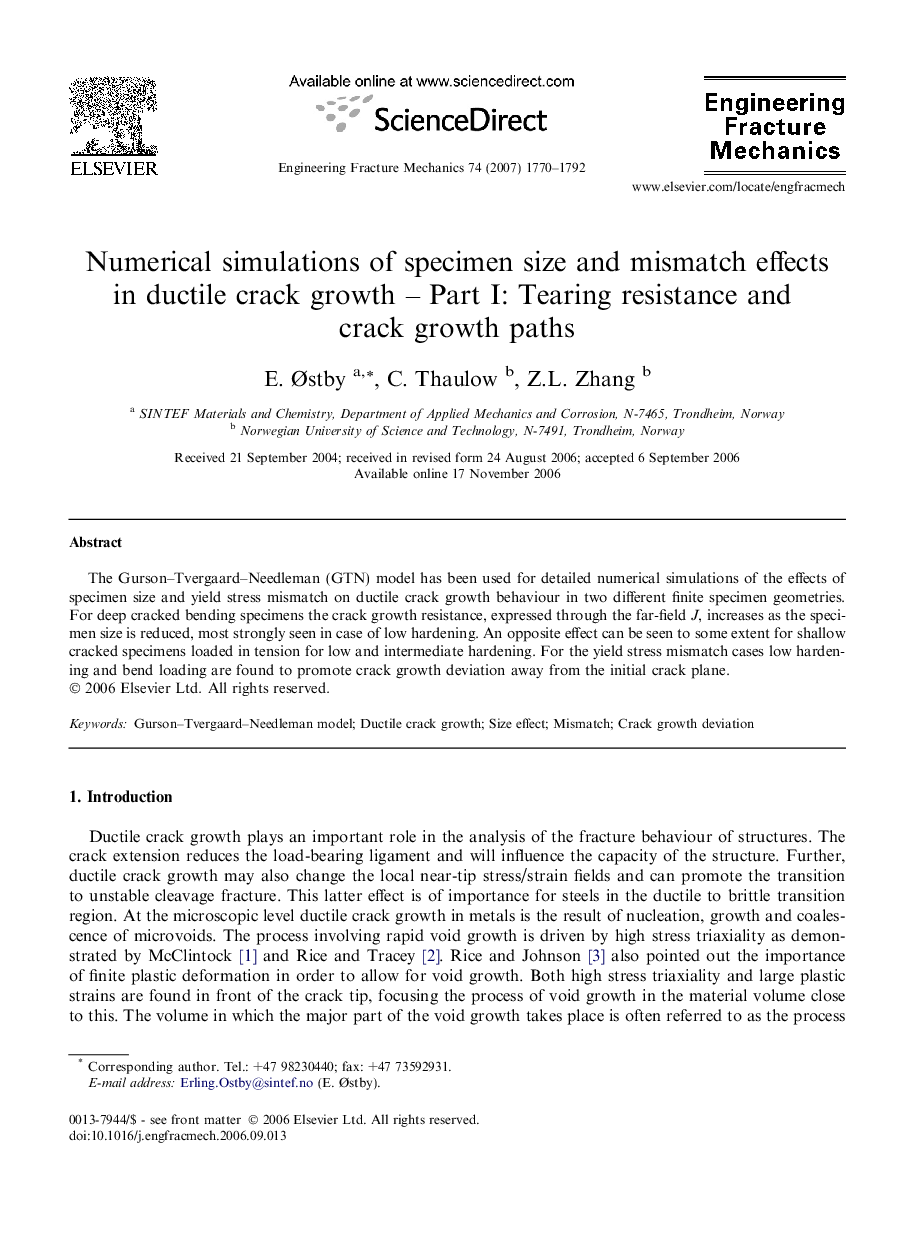| Article ID | Journal | Published Year | Pages | File Type |
|---|---|---|---|---|
| 772135 | Engineering Fracture Mechanics | 2007 | 23 Pages |
Abstract
The Gurson–Tvergaard–Needleman (GTN) model has been used for detailed numerical simulations of the effects of specimen size and yield stress mismatch on ductile crack growth behaviour in two different finite specimen geometries. For deep cracked bending specimens the crack growth resistance, expressed through the far-field J, increases as the specimen size is reduced, most strongly seen in case of low hardening. An opposite effect can be seen to some extent for shallow cracked specimens loaded in tension for low and intermediate hardening. For the yield stress mismatch cases low hardening and bend loading are found to promote crack growth deviation away from the initial crack plane.
Related Topics
Physical Sciences and Engineering
Engineering
Mechanical Engineering
Authors
E. Østby, C. Thaulow, Z.L. Zhang,
